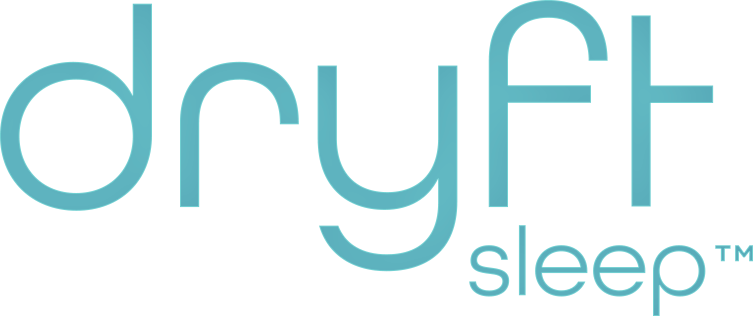Mastering Power Naps: The Art of Midday Rejuvenation

When you think about power naps, what comes to your mind? A luxury that only the leisurely can afford? Or an essential habit for high-performing individuals, like Thomas Edison, Salvador Dali, and Albert Einstein? If it's the former, you might want to reconsider.
Power napping isn't about laziness. It's about efficiency. It's about recharging, rejuvenating, and rebooting your day for peak performance. In this comprehensive guide, we'll dissect the science and art of power napping, equipping you with the knowledge to master the craft of midday rejuvenation.
Understanding Power Naps: The Science Behind the Snooze
Power napping might seem like a modern phenomenon, but it's rooted in our biology. Here's how.
What is a Power Nap?
A power nap is a brief sleep that stops before entering deep sleep or slow-wave sleep (SWS) to quickly revitalize the napper. It's a concise version of your night sleep, offering similar benefits but without the time commitment.
According to a study by NASA, pilots who took a 26-minute nap showed a 34% increase in performance and a 100% increase in alertness. Another study from the University of California showed that a power nap is more beneficial than caffeine for memory function.
The Benefits of Power Napping
The magic of power naps lies in their numerous benefits. From enhancing cognitive function to boosting creative thinking, power napping seems too good to be true. But how does this happen? Let's break it down.
- Improved Cognitive Function: Power naps work wonders for your brain. They can improve memory, enhance cognitive function, and even boost learning ability, as proven by a study from the Harvard Medical School.
- Boosts Mood: A power nap is like a reset button for your mood. It lowers stress levels, reduces fatigue, and improves overall mood.
- Increased Alertness: Power naps also increase alertness and reaction time, crucial for those in high-pressure jobs or operating machinery.
Why Power Naps Work
The effectiveness of power naps comes down to the phases of sleep. During a power nap, your brain primarily stays in the light sleep phase, which is beneficial for short-term alertness. But just knowing this is not enough. Mastering the art of power napping requires a deeper understanding of sleep cycles.
The Art of Power Napping
To power nap like a pro, you need to understand the mechanics of sleep. This includes sleep cycles, the best time for a power nap, and the ideal environment.
Understanding Sleep Cycles
Sleep isn't just an on-off switch. It's more like a dimmer, transitioning between different stages. A full sleep cycle lasts about 90 minutes and consists of four stages - three Non-REM stages and the REM stage. The first two stages are light sleep, followed by deep sleep and then REM sleep. The key to a rejuvenating power nap is not to enter the deep sleep stage, as waking up from it can cause sleep inertia, leading to grogginess.
Optimal Timing for Power Naps
Timing is crucial when it comes to power napping. Nap too long, and you risk entering deep sleep. Nap too short, and you may not feel refreshed. So what's the sweet spot? Most sleep experts agree on 10-20 minutes. This duration offers the benefits of the first two light sleep stages and helps avoid sleep inertia.
The timing of your power nap is also important. Mid-afternoon, around 2-3 pm, is considered the best time as it aligns with a natural dip in circadian rhythms.
Perfect Environment for Power Napping
The environment can significantly impact the quality of your power nap. Here's what you need:
- Quiet: A quiet environment is essential. Consider using earplugs or a white noise machine to block out distractions.
- Dark: The darker the room, the better. An eye mask can be beneficial if you can't control the room's light.
- Comfortable: A comfy spot to nap is crucial. It doesn't have to be a bed - even a well-cushioned chair can work.
- Cool: The temperature matters too. A slightly cool room is best for sleep, according to the National Sleep Foundation.
Techniques for Mastering Power Napping
Like any art, power napping has its techniques. Here are a few that can help you fall asleep quickly and wake up refreshed:
The Coffee Nap
Also known as a "caffeine nap," the idea is to drink a cup of coffee right before taking a power nap. The caffeine doesn't kick in immediately. It takes about 20 minutes, the perfect power nap duration. You'll wake up from your nap just as the caffeine starts to kick in, giving you a double whammy of alertness.
The Progressive Relaxation Technique
This technique involves tensing and relaxing each muscle group in your body. It aids in falling asleep by calming the mind and the body. Start from your toes and work your way up to your head for a full-body relaxation experience.
The Breathing Technique
Deep, slow breathing can calm your nervous system and help you fall asleep faster. Try the 4-7-8 technique - inhale for 4 seconds, hold for 7, and exhale for 8. Repeat this cycle until you drift off to sleep.
For those who find it hard to fall asleep even with these techniques, a sleep aid like Dryft Sleep Strips can be beneficial. These strips are made with natural ingredients and designed to help you fall asleep faster, ensuring you get the most out of your power nap.
Avoiding Common Power Nap Mistakes
Even with the best intentions and knowledge, power nap mistakes can happen. Here are a few common ones to avoid:
Oversleeping
Napping for too long can lead to sleep inertia or even affect your nighttime sleep. Stick to the recommended 10-20 minutes to avoid this.
Late Afternoon Napping
While it can be tempting to take a nap late in the afternoon, it can interfere with your nighttime sleep. Stick to the recommended mid-afternoon window for power naps.
Poor Environment Choices
We've already discussed how crucial the right environment is for power napping. So, a noisy, brightly lit, or uncomfortable environment won't cut it. Make your nap environment as sleep-friendly as possible.
Impact of Power Naps on Productivity
Mastering the art of power napping can do wonders for your productivity. Here's how:
Improved Mental Acuity
Regular power naps can enhance your mental acuity, improving your ability to focus and concentrate. This increased mental sharpness can lead to better decision-making and problem-solving abilities, boosting your productivity at work.
Enhanced Creativity
Power naps can also lead to increased creativity. They give your mind a brief respite, often leading to fresh insights and ideas when you wake up. Many renowned artists and thinkers, including Salvador Dali and Thomas Edison, were known for using power naps to boost their creativity.
Increased Stamina
Regular power napping can enhance physical stamina and delay the onset of fatigue. It's a great strategy for athletes or those with physically demanding jobs to maintain their performance throughout the day.
TL;DR
Mastering the art of power napping isn't just about closing your eyes and hoping for the best. It's about understanding your sleep cycles, finding the perfect timing, creating the right environment, and using effective techniques to maximize your nap benefits. With practice and a bit of patience, you can make power napping a part of your routine for peak performance and midday rejuvenation.
FAQs
- What is the ideal length of a power nap? The ideal power nap length is between 10 to 20 minutes, but it may vary depending on the individual.
- Can I take a power nap if I have trouble sleeping at night? If you have insomnia or difficulty sleeping at night, power naps could potentially make it worse. Consult a healthcare professional for personalized advice.
- How can I quickly fall asleep for a power nap? Techniques such as the Progressive Relaxation Technique, deep breathing, or using sleep aids like Dryft Sleep Strips can help you fall asleep faster.
- What's the best time of day for a power nap? The best time for a power nap is usually mid-afternoon, around 2 or 3 pm.
- Does a power nap affect night-time sleep? If taken correctly, power naps should not affect your night-time sleep. However, late afternoon naps or oversleeping can interfere with your sleep schedule.










